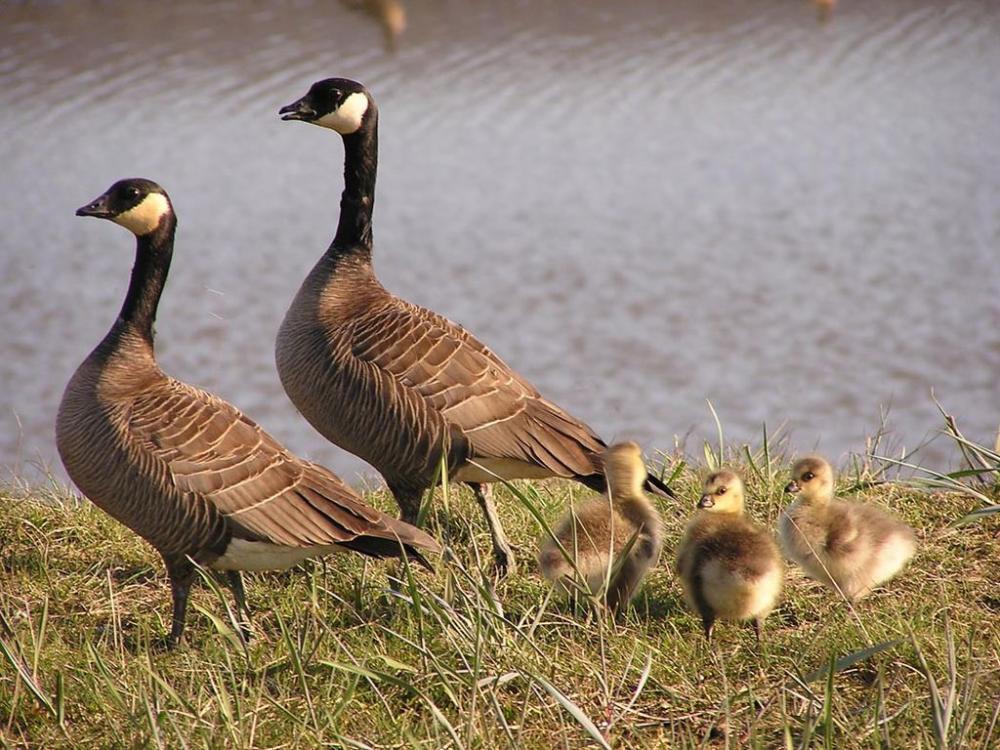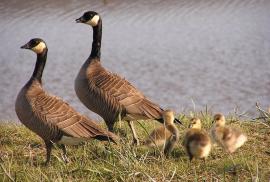Guide to Boreal Birds
Overview
The smaller subspecies of the Canada Goose (B. canadensis) have been split from that species and recognized as a single separate species named the Cackling Goose. This species includes the Richardson's, Aleutian, Alaskan (Taverna's), and Cackling subspecies. The smallest of these is the diminutive Cackling subspecies (B. h. minima), scarcely larger than the Mallard, which nests in the Yukon and winters mainly in California. The rarest is the Aleutian Islands form, which was on the U.S. Endangered Species List until March 2001, when it was delisted. Although Canada Geese are generally plentiful, the small Aleutian Island race was reduced to under 1,000 individuals in the 1960s, when Arctic Foxes were introduced on the geese's breeding islands by fur interests. The geese were wiped out on all but two islands. Thanks to recovery efforts, Aleutian Cackling Geese now breed on eight islands and number about 15,000.
Description
22-27" (56-68 cm). Brownish body with black head, long black neck, conspicuous white cheek patch. Shorter neck, bill, and overall size than Canada Goose.
Voice
Honking, high-pitched cackling.
Habitat
Tundra, lakes, marshes.
Range/Migration
Breeds in Aleutians and coastal Alaska to Baffin Island. Winters on West Coast, and in areas of interior in California, the Southwest into Mexico, and the Gulf Coast. May be seen in much of West and interior on migration.



